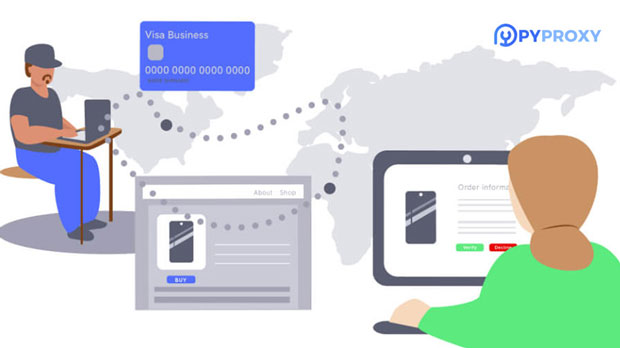What are the ways to get a stable list of free premium SOCKS5 proxies?
In the digital age, securing anonymity and privacy while browsing the internet has become increasingly important. One popular method of achieving this is by using proxies, and among the most secure and versatile types of proxies are socks5 proxies. These proxies allow users to route their internet traffic through a remote server, masking their IP address and providing a higher level of security and privacy. However, obtaining a stable and reliable list of free SOCKS5 proxies can be a challenge due to the inherent instability of free services. This article will discuss several methods for obtaining a stable list of free advanced SOCKS5 proxies, including some technical insights and the considerations you should be aware of. Understanding SOCKS5 Proxies and Their ImportanceBefore delving into the methods of obtaining free SOCKS5 proxies, it's essential to understand what SOCKS5 proxies are and why they are so highly regarded. SOCKS5, which stands for "Socket Secure 5," is the latest version of the SOCKS protocol and is a more advanced and secure option compared to older versions like SOCKS4.The key benefits of using SOCKS5 proxies include:1. Higher Anonymity: SOCKS5 proxies don't modify the packet headers, making them less detectable than other proxy types. This results in enhanced privacy and anonymity. 2. Support for Different Protocols: SOCKS5 is more versatile than other proxy types, as it supports a wider range of internet protocols, including HTTP, FTP, and UDP.3. Better Performance: SOCKS5 allows users to enjoy faster speeds and improved performance by routing traffic through optimized servers.Due to these advantages, many users seek SOCKS5 proxies for tasks like web scraping, bypassing geo-restrictions, and securing their online activities. However, obtaining stable and free SOCKS5 proxies requires some effort.Methods to Obtain Free socks5 proxy ListsObtaining stable and reliable SOCKS5 proxies for free involves various techniques. Here are some of the most effective methods:1. Free Proxy WebsitesOne of the most straightforward methods to find free SOCKS5 proxies is by using public proxy listing websites. These sites aggregate proxy lists that are available for public use. The proxies listed are usually categorized by type, including SOCKS5, and include details like speed, location, and reliability. These lists are updated regularly, allowing users to have access to the most current proxies.However, there are several caveats to using free proxy websites:- Instability: Free proxies, especially SOCKS5, are often unreliable and may not work consistently. Many of these proxies are overloaded or shut down quickly. - Security Risks: Since these proxies are publicly available, there is always a risk that some of them may be compromised or malicious, putting your data and privacy at risk.Despite these risks, if you need a quick solution for non-sensitive tasks, public proxy listing websites can be a useful starting point.2. Online Proxy Forums and CommunitiesAnother method of obtaining SOCKS5 proxies is through specialized online forums and communities dedicated to proxy users. These forums often have sections where users share proxy lists, including SOCKS5 proxies, that they've tested and found to be working.Advantages of using these forums include:- Community-Verified Proxies: Proxies shared on forums are typically verified by other users, so there’s a higher chance of finding stable ones. - Real-Time Updates: Many forums feature real-time discussions about which proxies are working or not, allowing you to quickly find reliable proxies.- Detailed Information: Forum posts often contain valuable information about the proxies, including their speed, location, and any restrictions.However, while forums can provide a more reliable source of proxies, the process of finding stable proxies can be time-consuming, and some communities may have strict rules about sharing proxies.3. Using Proxy Scraping ToolsProxy scraping tools are designed to automate the process of collecting proxy lists from various sources across the internet. These tools scan websites, forums, and other platforms that list free proxies and collect the data for you. Some advanced proxy scrapers are capable of filtering out unreliable proxies and focusing only on those that meet specific criteria, such as SOCKS5 support.The benefits of using proxy scraping tools include:- Automation: Proxy scraping tools can gather a large number of proxies quickly, saving you the time and effort of searching manually. - Customization: Many scraping tools allow you to specify filters for the proxies, such as location, speed, and type (e.g., SOCKS5).However, there are some drawbacks:- Maintenance: Proxy lists gathered using scraping tools require regular updates, as many proxies become inactive or blocked after a short period.- Legality: Some proxy scraping tools might violate the terms of service of websites they scrape from, potentially leading to legal issues or being banned from certain platforms.Despite these concerns, using a proxy scraping tool can be an effective way to gather SOCKS5 proxies, provided that you use it responsibly.4. Leveraging Open-Source Proxy DatabasesSome open-source projects and repositories on platforms like GitHub collect and maintain large databases of proxies, including SOCKS5. These databases are often curated by contributors who test and update the lists regularly.The advantages of open-source proxy databases include:- Trustworthiness: Open-source projects are often more reliable, as they are maintained by a community of developers who ensure that proxies are tested and verified.- Free and Open: Open-source repositories are typically free to use, making them a cost-effective option for individuals seeking SOCKS5 proxies.However, there are limitations:- Limited to Public Contributions: The quality of the proxies depends on the contributions from the community, which may vary.- Frequent Updates Needed: Open-source databases may not be updated as frequently as paid services, meaning that proxies could quickly become outdated.Despite these challenges, open-source databases are a valuable resource for those seeking free SOCKS5 proxies.5. Experimental or Temporary Proxy ServicesSome experimental or temporary proxy services offer free SOCKS5 proxies for a limited time as part of a trial or beta phase. While these proxies can be high-quality and reliable during the trial period, they often become unavailable once the service ends or transitions to a paid model.The key advantage of these services is that they typically provide high-speed and stable proxies for a limited period. However, the drawback is that these proxies may disappear after the trial phase ends.Considerations for Using Free SOCKS5 ProxiesWhile free SOCKS5 proxies can be useful, there are several important considerations to keep in mind:1. Security and Privacy: Free proxies are more likely to be compromised or malicious. Always be cautious when using free SOCKS5 proxies, especially for sensitive activities like logging into accounts or transmitting personal information.2. Speed and Reliability: Free proxies are often slower and less reliable than paid options. Be prepared for potential issues with connection stability and speed.3. Limited Usage: Free SOCKS5 proxies are typically limited in terms of bandwidth and usage. For large-scale operations like web scraping, you may need to rely on paid proxies for better performance.ConclusionObtaining a stable list of free advanced SOCKS5 proxies requires patience, diligence, and awareness of the potential risks. By utilizing free proxy websites, online forums, proxy scraping tools, open-source databases, and experimental services, users can access SOCKS5 proxies without incurring costs. However, these free options come with trade-offs, including security concerns and unreliable performance. For more critical or long-term needs, a paid solution may be the better option. Ultimately, users should weigh their privacy, security, and performance needs when deciding which method to use for obtaining SOCKS5 proxies.
2025-01-06
























































